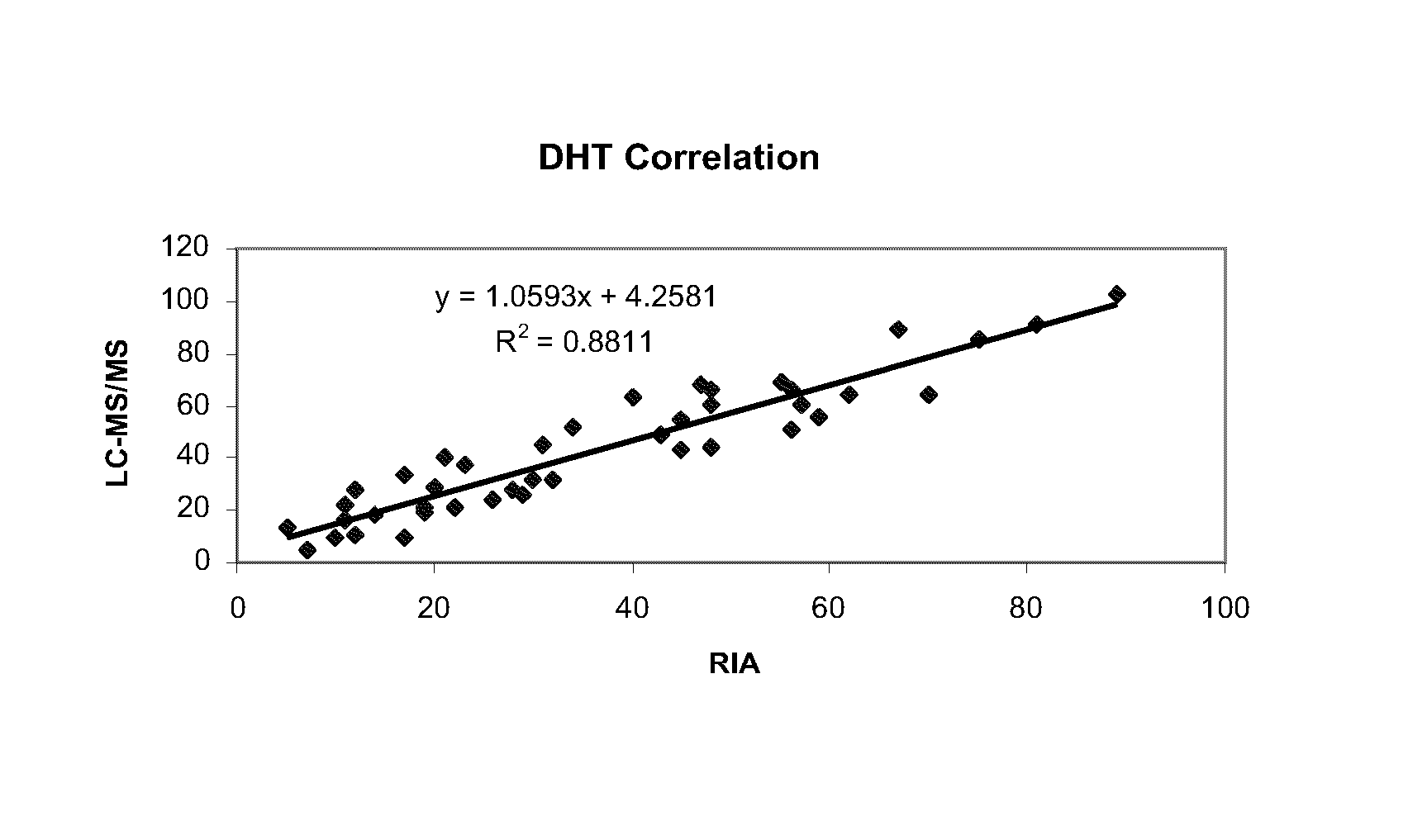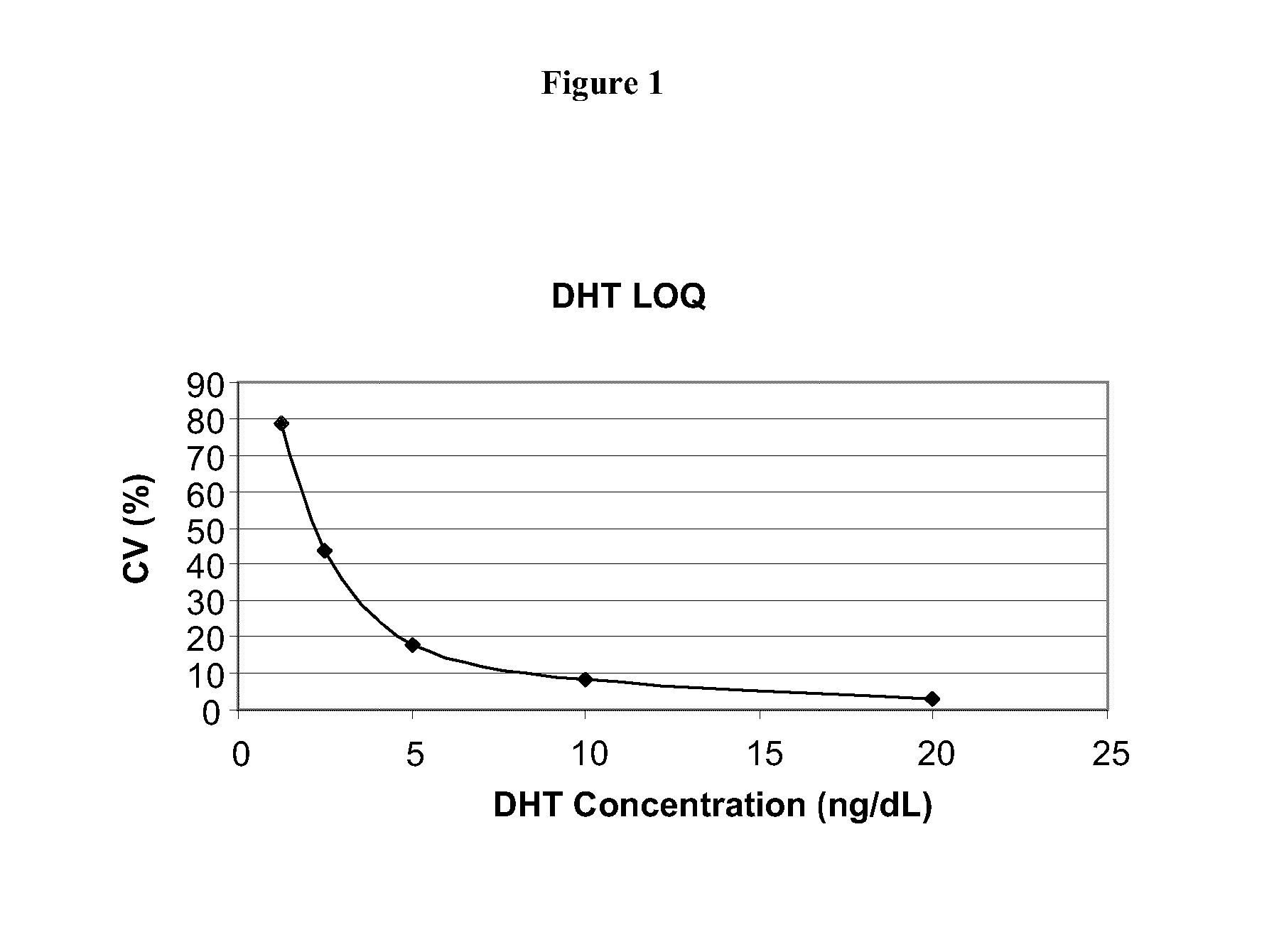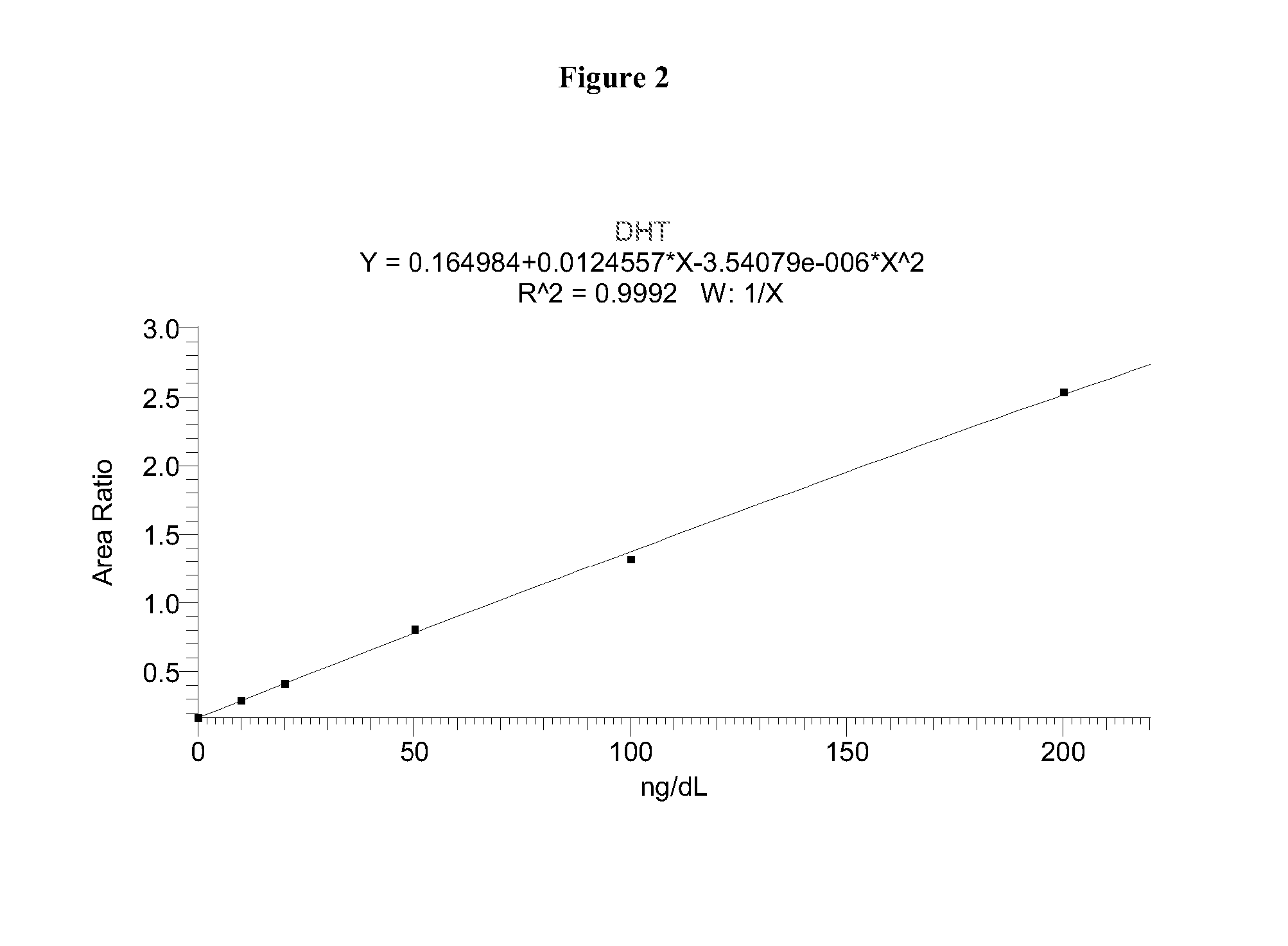Methods for detecting dihydrotestosterone by mass spectrometry
a mass spectrometry and dihydrotestosterone technology, applied in the field of detection of dihydrotestosterone, can solve the problems of achieve the effects of saving significant time and expense, improving solvent removal, and less susceptible to dissociation
- Summary
- Abstract
- Description
- Claims
- Application Information
AI Technical Summary
Benefits of technology
Problems solved by technology
Method used
Image
Examples
example 1
Serum Sample and Reagent Preparation
[0078]Plasma samples were prepared by collecting blood in a Vacutainer tube with no additives and allowed to clot for about 30 minutes at room temperature. Samples were then centrifuged and the serum separated from the cells. Samples that exhibited gross hemolysis were excluded.
[0079]Three stock solutions were prepared with DHT (Sigma Chemical Company, Cat. No. A7755, or equivalent). A DHT stock standard solution of 1 mg / mL in methanol was prepared in a volumetric flask. A portion of the DHT stock standard solution was then diluted by 1:100 to prepare a DHT intermediate stock standard solution of 1,000,000 ng / dL in methanol. A portion of the intermediate stock standard solution was used to prepare a second intermediate stock standard solution of 2,000 ng / dL in methanol. The second intermediate stock standard solution was used to prepare a DHT working standard of 200 ng / dL in stripped serum.
[0080]16, 16, 17-d3 dihydrotestosterone (CDN, Cat. No. D-5...
example 2
Extraction of DHT from Samples Using Liquid Chromatography
[0081]Room temperature standards, controls, and patient samples were prepared for liquid chromatography (LC) by first mixing by mechanical vortex.
[0082]300 μL of each vortexed standard, control, and patient sample was then transferred to a well of a 96-well plate. 300 μL of 20% formic acid and 100 μL of 500 ng / mL 16, 16, 17-d3 dihydrotestosterone internal standard working solution were then added to each. The plates were then vortexed and incubated at room temperature for 30 minutes before being loaded into an autosampler drawer.
[0083]Sample injection was performed with a Cohesive Technologies Aria TLX-1 HTLC system using Aria OS V 1.5 or newer software. An autosampler wash solution was prepared using 60% acetonitrile, 30% isopropanol, and 10% acetone (v / v).
[0084]The HTLC system automatically injected 100 μL of the above prepared samples into a TurboFlow column (50×1.0 mm, 50 μm C-18 column from Cohesive Technologies) packed ...
example 3
Detection and Quantitation of DHT by MS / MS
[0087]MS / MS was performed using a Finnigan TSQ Quantum Ultra MS / MS system (Thermo Electron Corporation). The following software programs all from ThermoElectron were used in the Examples described herein: Quantum Tune Master V 1.2 or newer, Xcalibur V 1.4 SR1 or newer, TSQ Quantum 1.4 or newer, and LCQuan V 2.0 with SP1 or newer. Liquid solvent / analyte exiting the analytical column flowed to the heated nebulizer interface of a Thermo Finnigan MS / MS analyzer. The solvent / analyte mixture was converted to vapor in the heated tubing of the interface. Analytes in the nebulized solvent were ionized by APCI.
[0088]Ions passed to the first quadrupole (Q1), which selected ions with a mass to charge ratio of 291.10±0.50 m / z. Ions entering Quadrupole 2 (Q2) collided with argon gas to generate ion fragments, which were passed to quadrupole 3 (Q3) for further selection. Simultaneously, the same process using isotope dilution mass spectrometry was carried ...
PUM
| Property | Measurement | Unit |
|---|---|---|
| molecular weight | aaaaa | aaaaa |
| particle diameter | aaaaa | aaaaa |
| diameter | aaaaa | aaaaa |
Abstract
Description
Claims
Application Information
 Login to View More
Login to View More - R&D
- Intellectual Property
- Life Sciences
- Materials
- Tech Scout
- Unparalleled Data Quality
- Higher Quality Content
- 60% Fewer Hallucinations
Browse by: Latest US Patents, China's latest patents, Technical Efficacy Thesaurus, Application Domain, Technology Topic, Popular Technical Reports.
© 2025 PatSnap. All rights reserved.Legal|Privacy policy|Modern Slavery Act Transparency Statement|Sitemap|About US| Contact US: help@patsnap.com



